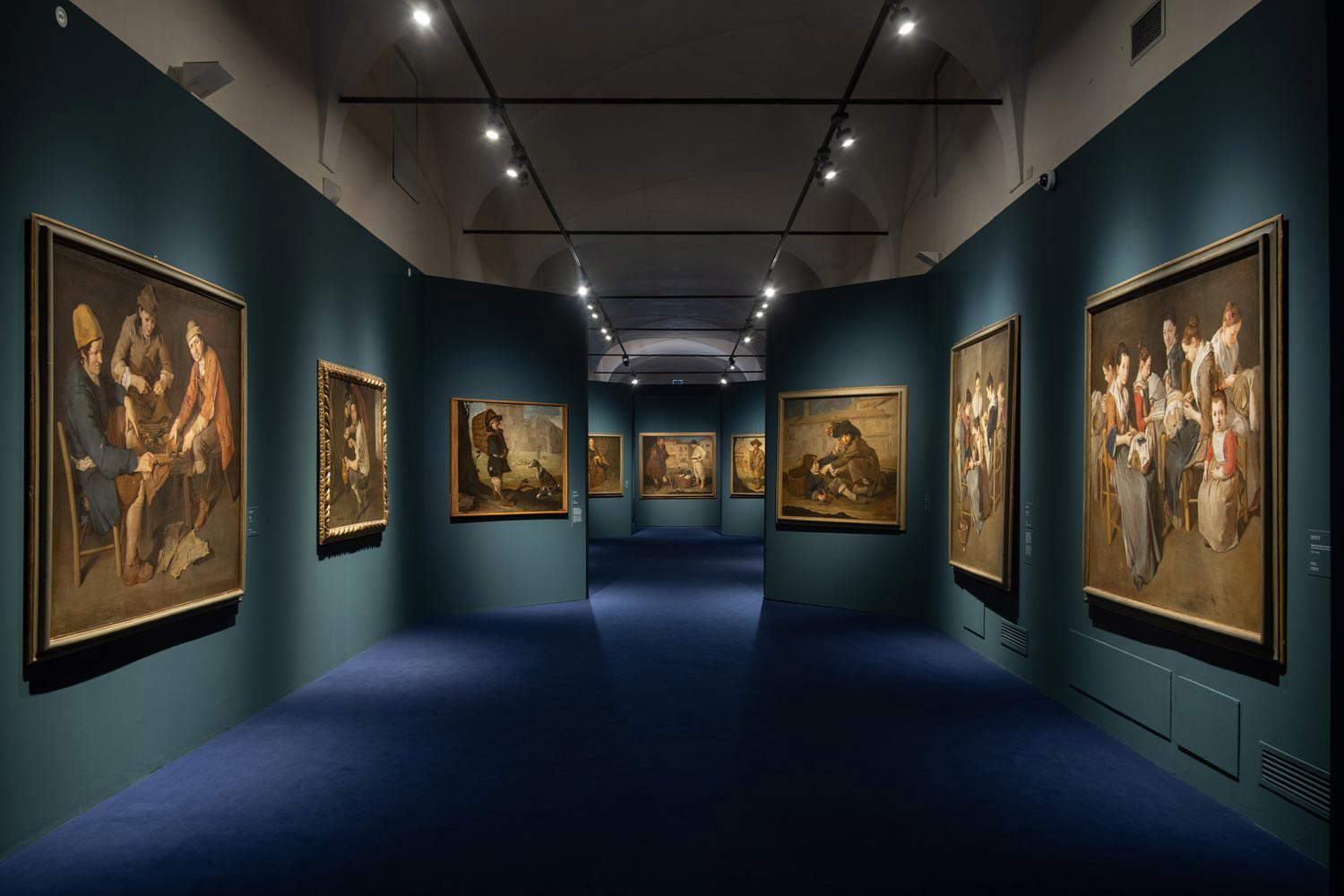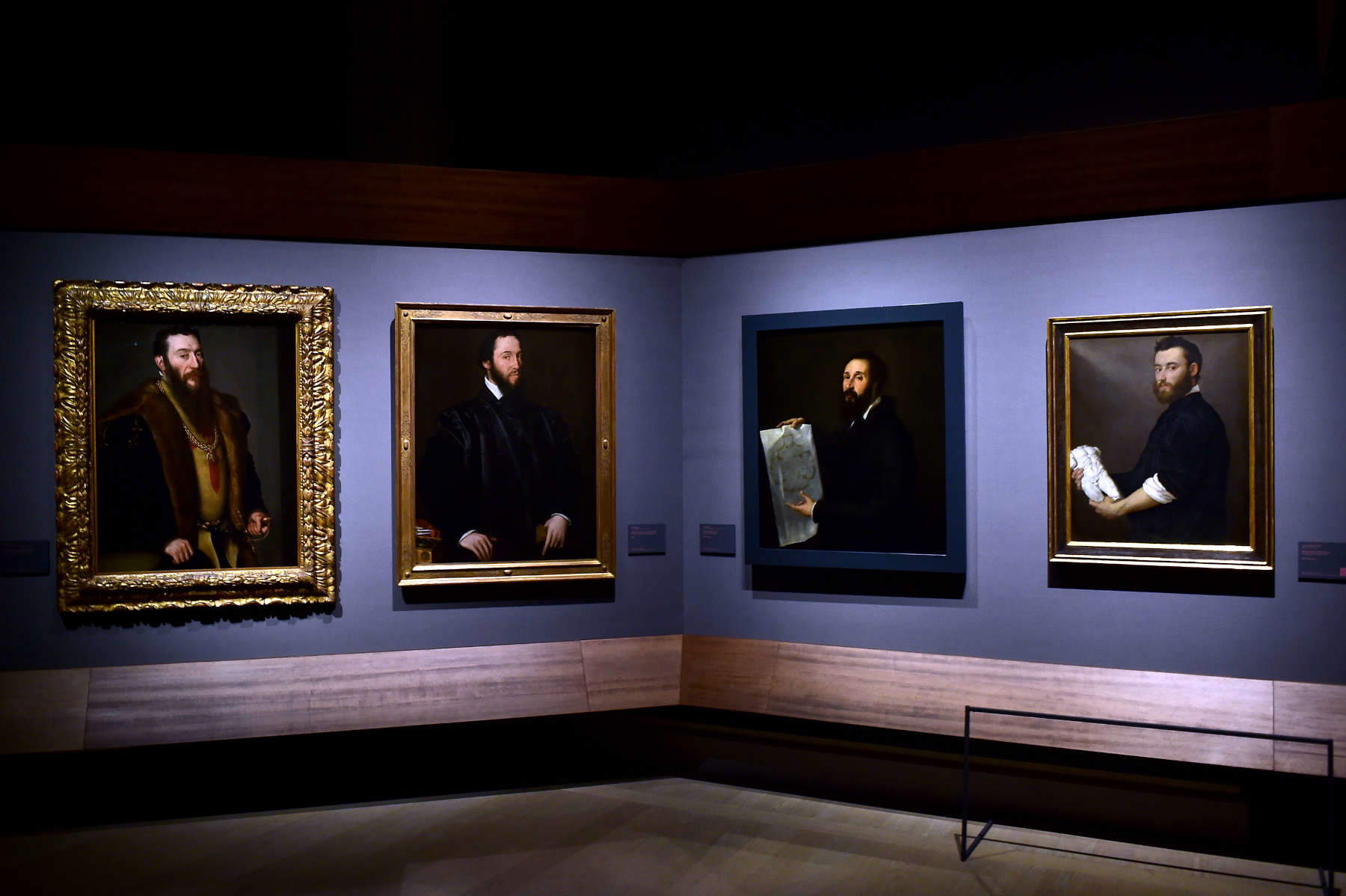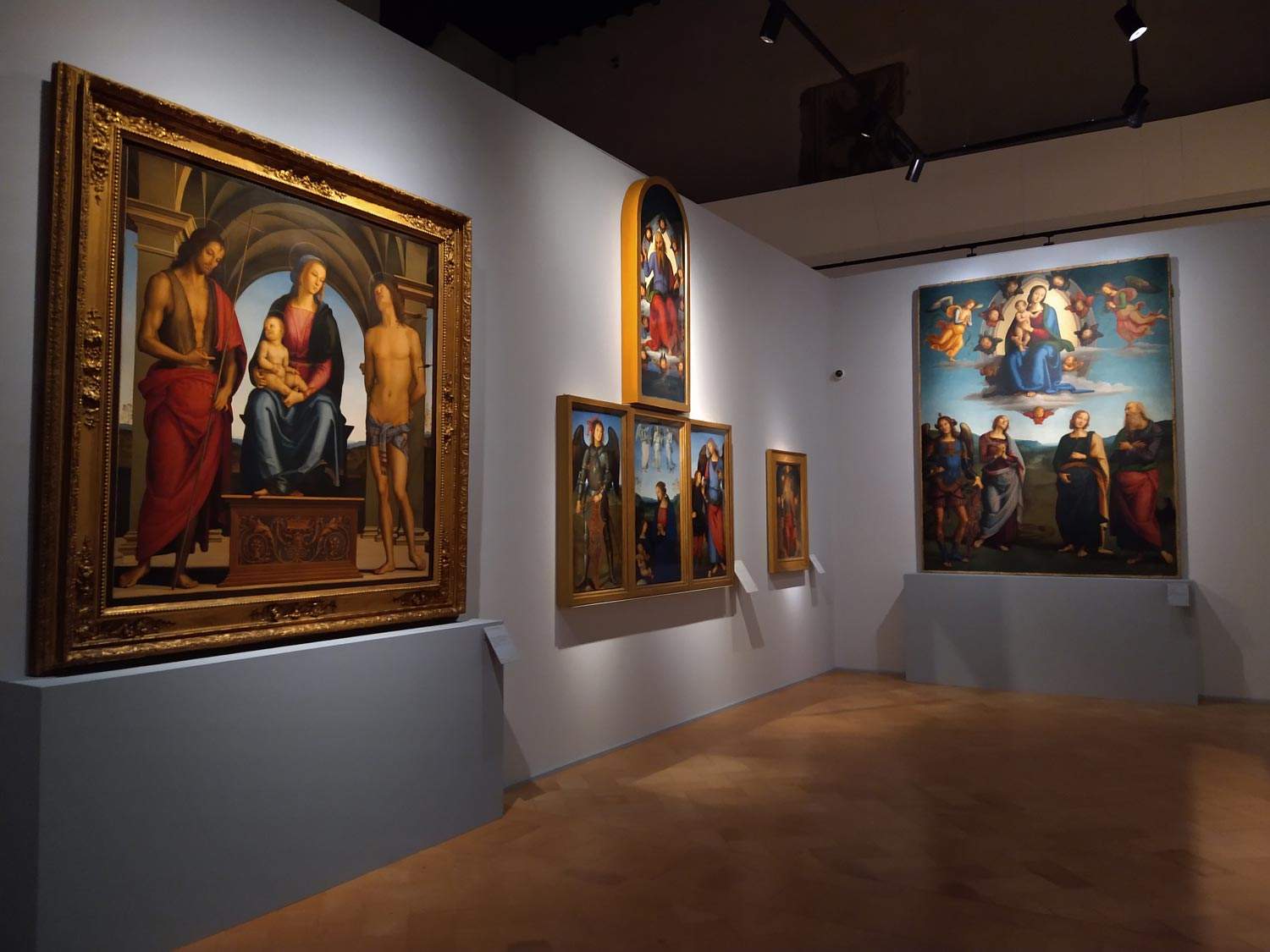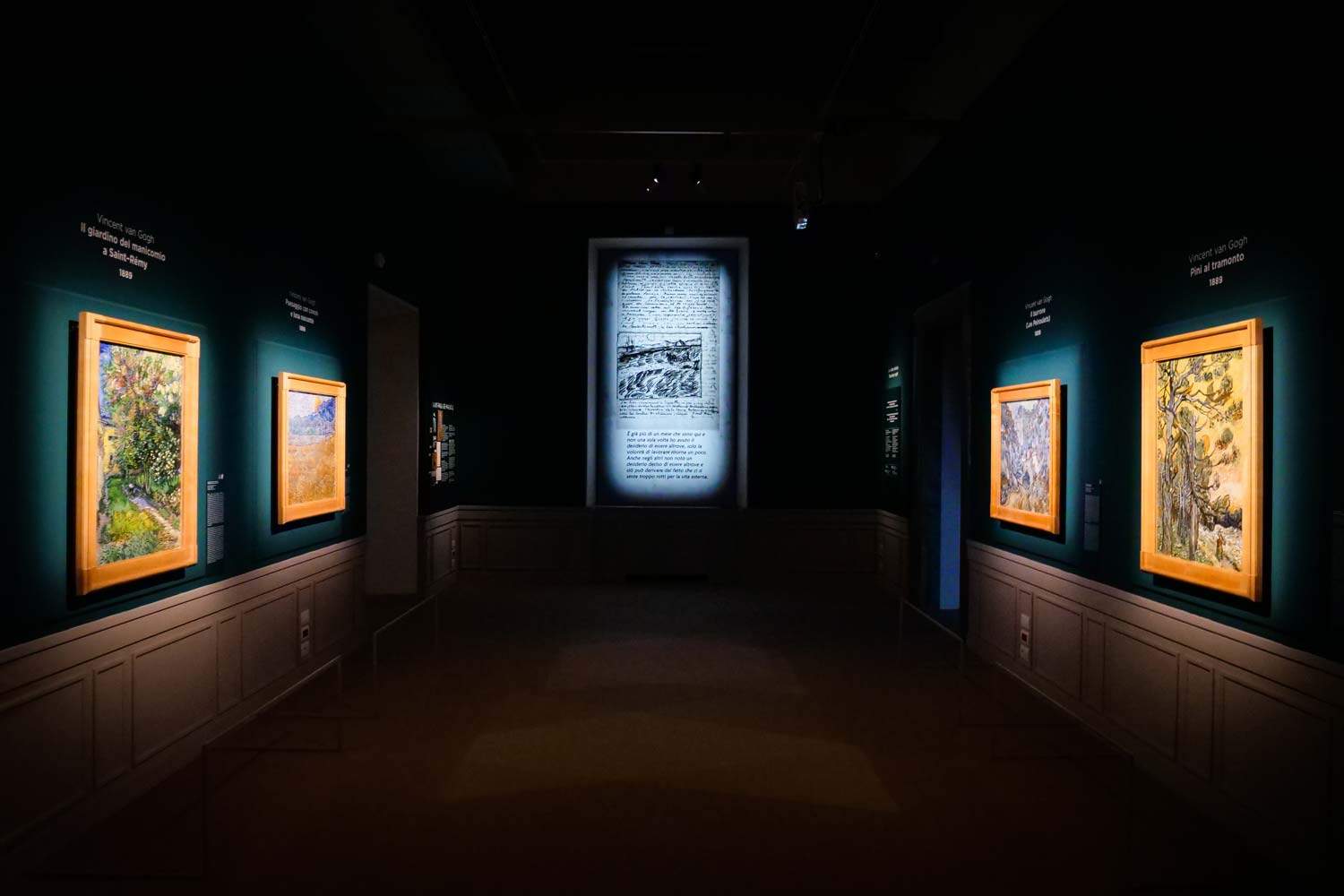But do exhibitions in Italy really suck as much as Nicola Lagioia says they do?
Is there really a gulf separating Italy’s exhibition offerings from those of countries like France or even the Netherlands? While in Paris hordes of visitors, including Italians, remain enraptured among the rooms of the Rothko exhibition at the Fondation Louis Vuitton, and after hundreds of thousands besieged the Rijksmuseum in Amsterdam last year to marvel at the works of Jan Vermeer, at our latitudes we can just look at what is happening on the other side of the Alps and exhale melancholy sighs. At least Nicola Lagioia, author of a recent article on the alleged risk of Italy’s marginalization in the international cultural context, is convinced of this: a long intemperate addressed to Minister Sangiuliano, considered guilty of inaction, which mixes a bit of everything touching everything on the surface, from Italian policies on the promotion of books to the recent controversy on cultural hegemony, from the lack of competitiveness of our institutions passing, precisely, through the gap that exhibitions organized in Italy would discount in relation to those visited abroad.
While in Italy we are discussing the Tolkien exhibition at the National Gallery of Modern and Contemporary Art in Rome, Lagioia says, “in Paris, right now, an exhibition on Mark Rothko is being held that Italy can dream of,” and “in Amsterdam, last year, one was held on Vermeer that would be unimaginable by us.” according to the former director of the Turin Book Fair, “it is chasms of this kind that should be filled.” It is not clear what an exhibition organized by a private entity (the one on Rothko, which should, if anything, be compared with the exhibitions of, say, a Prada Foundation) has to do with the lack of institutional competitiveness: typical distortions of articles in which one makes, out of the blue, a pot pourri of arguments that would need more in-depth reasoning, and that have little to do with each other, since the problems of publishing are not the same as those that bedevil the museum sector, since the book market is profoundly different from that of exhibitions, and so on.
In the meantime, one can provide a concise answer to Lagioia’s propalations: on the exhibition offer, Italy has no chasm to fill compared to other countries. In our country, high-profile exhibitions are organized every year, which are also often of great appeal: it will suffice to mention, just to recall an exhibition of the highest level, comparable to the one on Vermeer at the Rijskmuseum (without counting, therefore, how captious a comparison set on theexception, i.e., the epochal exhibition on Vermeer, and not on the rule), the great monograph on Donatello held last year at Palazzo Strozzi and the Bargello Museum, which was talked about all over the world. Just to limit ourselves to the exhibitions of 2023, one could then mention those on Perugino, on Cecco del Caravaggio, on Giacomo Ceruti (the latter later also exported to the United States).And if we wanted to talk about exhibitions that can be visited right now, a detour to Milan to see the exhibition on Giovanni Battista Moroni, the most comprehensive ever on the great Lombard artist, is suggested: the previous ones on the artist, organized in New York and London, did not have the same level of depth as the one at the Gallerie d’Italia. These, of course, are events that do not have the scope of the highly anticipated exhibition on Vermeer (which, however, it must be repeated, is a rare case), but they are sufficient to challenge a lack of familiarity with the Italian museum scene to those who claim that Italy has alleged chasms to saturate. These are exhibitions that, moreover, also show how widespread our offer is, given that, going back to the three examples above, we are talking about exhibitions that were held in Perugia, Bergamo and Brescia: abroad, apart from capitals and large cities, how many centers of more than one hundred thousand inhabitants are able to offer comparable exhibitions? Is such an offer thinkable, say, in Montpellier, Leeds or Valladolid? Our museum system, after all, is diffuse and capillarized, as opposed to what happens in other countries, and as a result, expenditures and energies are also decidedly more fractionalized in order to give as many museums as possible the opportunity to organize interesting exhibitions for their audiences. These are factors that should always be taken into consideration before venturing into considerations of the Italian exhibition offerings. Or before administering to one’s readers the usual, banal, frumpy cliché of the Louvre “alone billing more than all Italian museums put together.” if Lagioia knew a little more about the museum sector he would avoid inviting reasoning on this element, since the Louvre does indeed make more money, but it does so mainly because its spaces allow it to host a number of visitors that is precluded, for mere physical reasons, from any Italian museum. If anything, the comparison should be made on the basis of the ratio of revenue to visitors: it will be found that, in 2019, the Louvre generated 99.41 million euros in ticketing revenue from 10 million visitors (about 10 euros per visitor), while the most visited Italian museum, the Uffizi, produced ticketing revenue of about 30 million euros by welcoming 4.3 million visitors (just under 7 euros per visitor).
It should also be noted that almost every month at least one review of an exhibition held in Italy is published in Burlington Magazine, the world’s leading scholarly journal of art history, and more often than not the reviews are positive. There is also no shortage of exhibitions that are able to make big numbers (though often at the expense of quality, but this obviously does not happen only in Italy): the Vermeer exhibition in Amsterdam made 650,000 visitors, but the same year the Van Gogh exhibition at the Bonaparte Palace, though organized by a private entity, exceeded 580,000. And again, taking the most recent data, those of 2022, in the ranking of the 50 most visited exhibitions in the world (Art Newspaper data), Italy is the country that placed the most exhibitions, with seven, ahead of France (6), and the United States, Spain, Japan and Great Britain (4 each). We are behind, as far as audience numbers are concerned, only in total visitors (2,440,933 the six French exhibitions, 1,655,025 the Italian ones) but wanting to compare only the exhibitions held at public exhibition venues (since Lagioia is talking about institutions), Italy comes back ahead with 1,417,562 visitors against France’s 1,190,933.


 Exhibition on
Exhibition on Exhibition on
Exhibition on Exhibition on
Exhibition onIt cannot be said that Italy has not tried to make itself attractive in this respect in recent years. We all remember that the action of Franceschini’s seven-year term (between 2014 and 2022 he was minister of culture almost continuously, and the substantive thrust of his reform has not been touched in the last two) has focused mainly on the museum sector, for a reason that I think is quite obvious: although museums are fundamental places for the education and growth of citizens, for reasons of common mentality and economic reasons, politics tends to link them above all to tourism, and in Italy in 2022 the expenditure incurred by “tourists with cultural consumption,” as they are called by statistics, touched 35 billion euros (data from Isnart - National Institute of Tourism Research for the Observatory on the Economy of Tourism of the Chambers of Commerce). We are therefore talking about a market worth ten times that of books, and even if we wanted to reduce it to just the group of tourists who come to Italy specifically to see its artistic riches, we would still be talking about a volume of 18 billion euros, six times the publishing market. It is natural, then, that the ministry has dedicated its largest commitments to a sector that is linked to an important supply chain and that represents Italy’s image in the world. Each figure should then be examined in the context of a country that has an atavistic problem: we are perennially at the bottom of the charts of public spending on culture relative to gross domestic product. Even for 2021, the year of the most recent surveys available, Eurostat data tell us of an Italy that spends very little on cultural services, 0.3% of GDP, in the company of Portugal and Romania, and just above Ireland, Greece and Cyprus (0.2%), against, for example, 0.5% in Germany and Spain or 0.6% in France, and against an EU average of 0.5%. So if Italy is in danger of being culturally marginalized, it is a situation we are certainly not discovering today, it does not depend on this or that minister, and it has much deeper and more deeply rooted causes in our mentality and manners than Lagioia’s article suggests.
One risks digressing, however: staying on the topic, it is clear that, however broad and interesting, and despite the clichés, Italy’s exhibition and museum offerings have obvious problems. Starting with the most ordinary ones, Italian museums are often hostile to those who work by day, and their opening hours are calibrated mostly to the needs of school and tourist audiences, and no one has any intention of changing them, for purely trade union reasons. Lagioia dreams of an exhibition like Vermeer’s: I am content to dream of museums that offer hours similar to those of cinemas, to dream of a museum that gives me the possibility of entering around 10 or 11 p.m., as already happens in many European cities, such as in London or Paris where the National Gallery and the Louvre offer three extra hours on Friday evenings, and as someone has already begun to do in our country as well (virtuous is the case of the Palazzo Reale in Milan, which closes at 10:30 on Thursday evenings).In this regard, it will be useful to recall that the Vermeer exhibition used to close at 23:00 on weekends (practically late at night for the habits of the Dutch), and for the last few days had extended hours until 2:00 a.m.: in Italy this would be science fiction. Then, almost everywhere there is a lack of incentives for residents, a lack of policies that encourage citizens to visit their museums with some frequency, a subject we have discussed to the point of boredom on these pages.
Then, exhibition venues communicate little, or at any rate do not do so adequately. One example out of all is worth mentioning: in Brescia, Italy’s capital of culture, the splendid monographic exhibition on Giacomo Ceruti, an event of international stature, organized at the Santa Giulia, totaled just 18,000 visitors. The unexciting Lotto, Romanino, Moretto, Ceruti exhibition, a kind of small-scale (and with works of lesser quality) replica of the itinerary of the city’s main picture gallery, organized at Palazzo Martinengo (thus a hundred meters from the Santa Giulia), closed with 45,117 visitors. In practice, it means that the visitors in Brescia were there, only they missed the most beautiful and most important exhibition.
Then there is, in state museums, the chronic problem of lack of staff, one of the main unresolved issues of the Franceschini period. On a par with the lack of incisiveness of its action in the contemporary art sector: if we really want to find any difference between Italian and foreign exhibition offerings, it is on contemporary art that we need to focus, and here too we suffer from the fact that we have a less developed contemporary art market than that of other countries, on which initiatives such as the Italian Art Council for now do not yet seem to have made a marked impact, for a series of reasons that it is not the case to touch on here since it would go off topic. These are further failings of the Franceschini-branded ministry, more significant and impactful than a VeryBello, a Library of the Unseen or an ItsArt.
Quality of the reception that exhibition venues give to the public, communication, relations with private individuals, promotion of Italian contemporary art, and then again digitization, work, investment. These are some of the issues that, limited to the world of exhibitions and museums, and by way of incompleteness, should be brought to Minister Sangiuliano’s attention and that should be at the center of the cultural debate in a serious country. Logically, as long as the topics of discussion are the amount of books the minister reads or whether Dante can be pigeonholed to the right instead of the left, we cannot move an inch. Are we really sure that the level of cultural debate in Italy is of sufficient quality to call the minister to results instead of proclamations?
Warning: the translation into English of the original Italian article was created using automatic tools. We undertake to review all articles, but we do not guarantee the total absence of inaccuracies in the translation due to the program. You can find the original by clicking on the ITA button. If you find any mistake,please contact us.




























